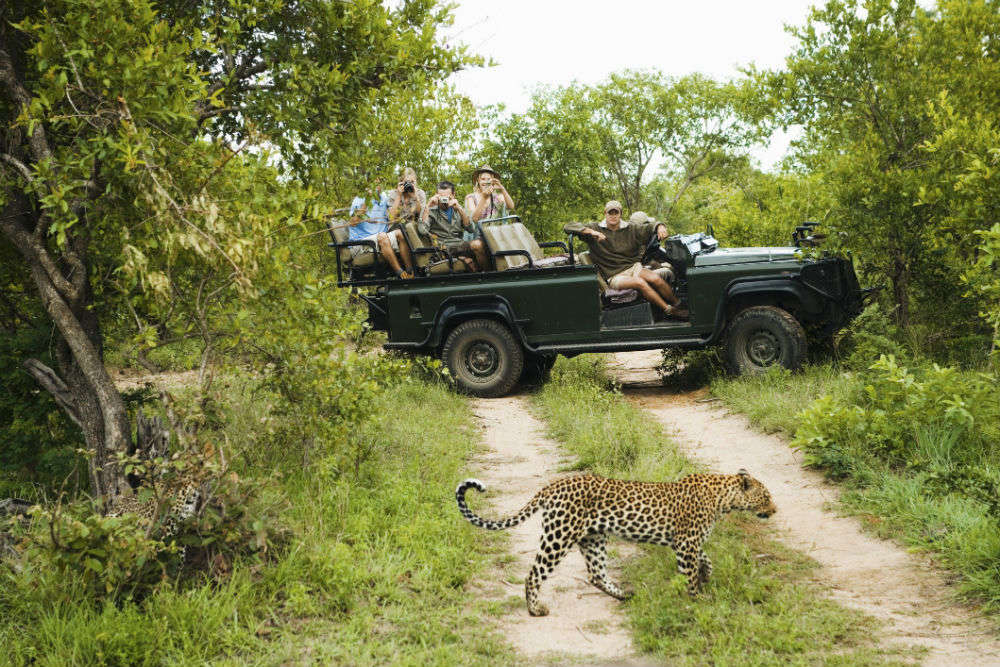S outh Africa is a land of contrasts , encompassing everything from the vast unspoilt wilderness of the Karoo to the sparkling harbour of Cape Town. Whether you wish to explore the country’s diverse landscapes by car or train, discover its remarkable wildlife on safari, or learn about its turbulent history, we can plan your trip accordingly. Over the next pages, we have highlighted a few options to bear in mind when planning your trip. We can easily form an entire journey around a single interest or combine a variety of activities and attractions to suit your preferences; our team of specialists will be glad to advise on how best to plan your adventure.
Safari Conservation has transformed much of South Africa’s former degraded farmland into superb wildlife habitats. These have been carefully nurtured to reintroduce indigenous plants and subsequently restocked with game.
You’ll hear much talk of the Big Five in South Africa – lion, leopard, buffalo, elephant and rhino. Many of the national parks and private game reserves boast this much fabled quintet, although there is plenty to see besides, including hippo, warthog, giraffe, zebra and numerous antelope such as kudu, eland and nyala. Birdwatching is excellent, particularly around the Kruger, with species ranging from iridescent rollers to elegant fish eagles. A typical safari takes the form of game drives with knowledgeable rangers. Most game viewing takes place in the morning and late afternoon when the wildlife is most active, allowing you time to relax during the heat of the day. Some lodges also offer guided bush walks and night drives. Photography South Africa is a photographer’s paradise. Whether it’s spectacular wildlife viewed from an open vehicle, dramatic coastlines, towering mountains or Zulu dancing, the subjects are endless.
The smaller details are equally fascinating, including colourful proteas, delightful butterflies and abundant birdlife. The ease of self-driving throughout the country means you can spend as long as you need to wait for the perfect light or stop by a roadside to capture an unforgettable sunset. Some safari operators offer guided photographic safaris with professional photographers throughout the year, ideal if you are looking to hone your skills.
Family travel In recent years, family-friendly accommodation has sprung up across South Africa, making travelling here with children hassle free. Many of these properties have family rooms as well as the option of early meal times and babysitting services to allow parents to relax. On safari, younger children can learn about the toothbrush tree, track wildlife and make plaster casts of animal footprints. Teenagers will find plenty to keep them amused including canoeing, kitesurfing, hiking and mountain biking. For the more adventurous, abseiling and bungee jumping are also possible. Another draw is that large swathes of the country are malaria-free, including several safari areas. Whatever your needs, our specialists will be able to recommend areas for you to visit and accommodation to suit your family, to ensure you all have a memorable and thoroughly enjoyable trip.
History The legacy of the Dutch and British colonial days can be seen throughout South Africa in the architecture, Afrikaans language and the sites of conflicts which can be visited today. For many visitors it’s the more recent history of apartheid that holds the most interest. Museums such as Robben Island or Johannesburg’s Apartheid Museum offer informative displays on this era while visits to the townships give a more direct insight into the plight of the people. Much has changed since then and the country is becoming increasingly well integrated. As a visitor it is remarkable to see how far South Africa has come since apartheid and how cosmopolitan its society is today.
Self-driving The most popular way to travel around South Africa is to drive independently and we can arrange a hire car for as much of your trip as you wish. This is a wonderful way to explore the country and set the pace of your days. Roads are generally in good condition, driving is on the left and we provide detailed directions and a road map to help you find your way. Driving can be readily combined with flights or rail journeys to access more remote parts of the country, so you needn’t drive for your entire trip if you don’t want to. For more information on self-driving, we will provide more information about it please send to us on Twitter @myhotele


